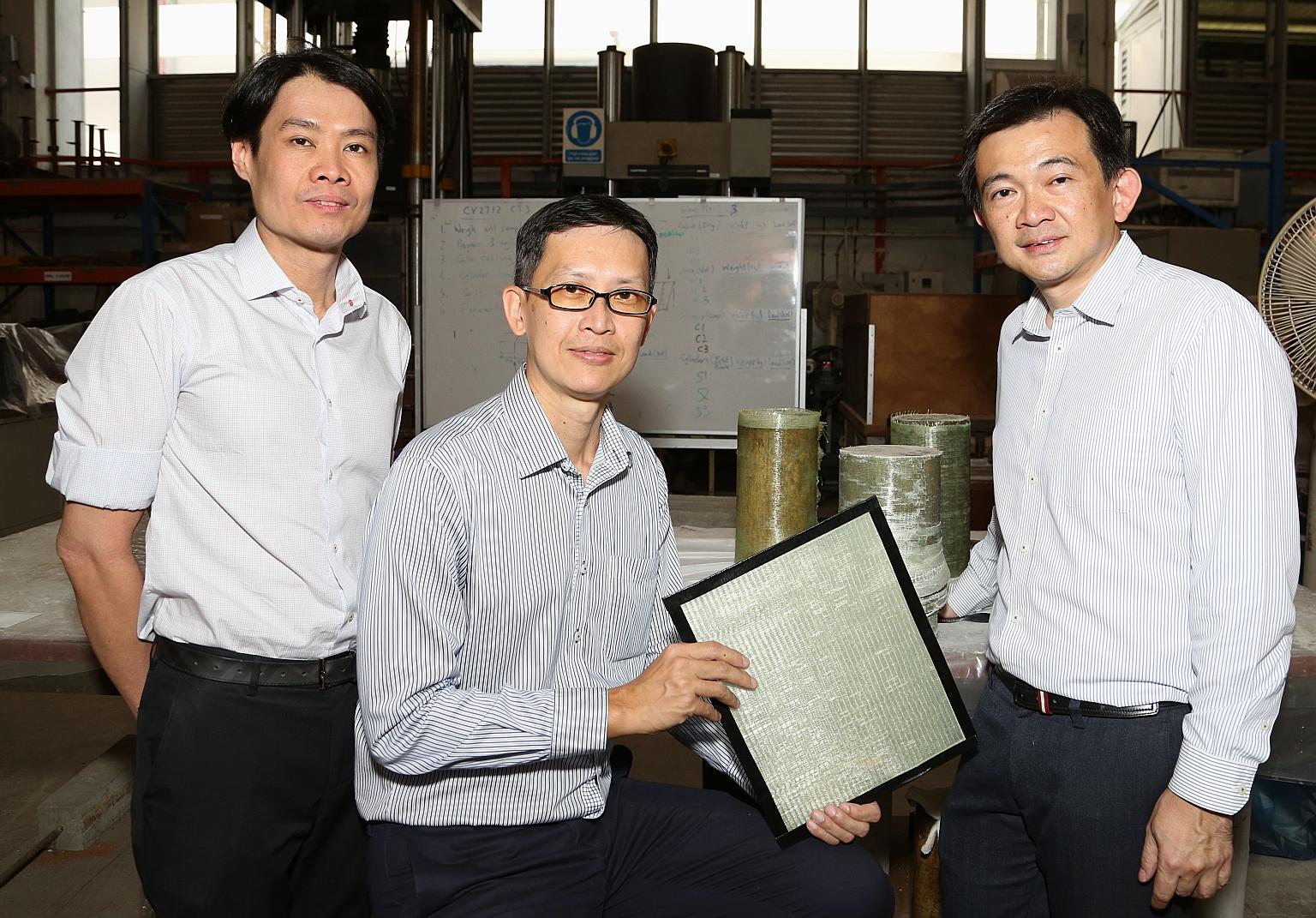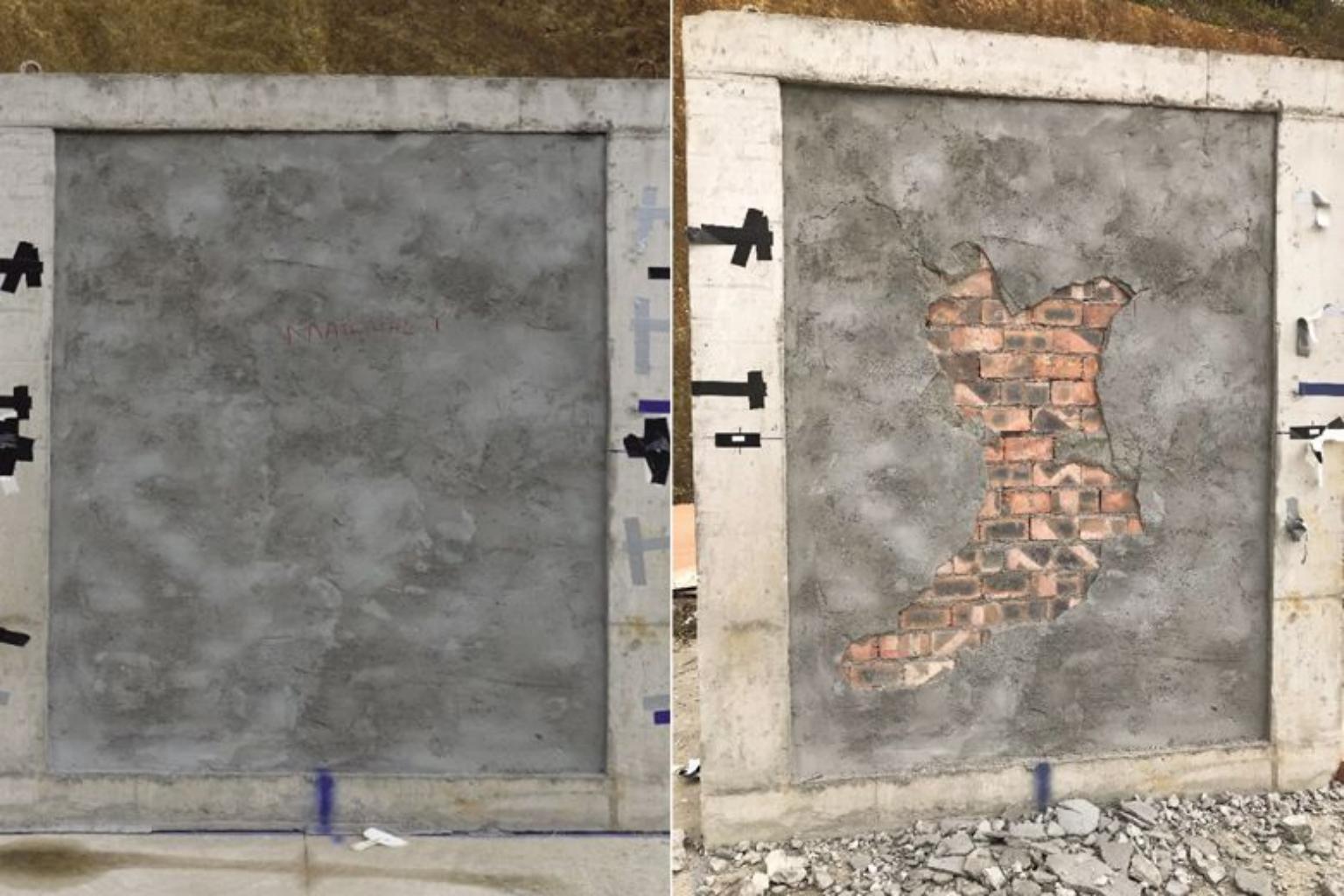Want to blast proof a building? Just wrap it
New material viable for preserving historical structures, protecting essential infrastructure
Sign up now: Get ST's newsletters delivered to your inbox

From left: Mr Calvin Chung, group director of engineering at JTC; Associate Professor Ng Kee Woei, from NTU's School of Materials Science and Engineering; and Dr Ang Choon Keat, founder of Prostruct Consulting. FasRaP was jointly developed by scientists and engineers from NTU, as well as engineers from JTC and Prostruct.
PHOTO: LIANHE ZAOBAO
Cheryl Teh
Follow topic:
Scientists at the Nanyang Technological University (NTU) who set out to create a material that can be used on buildings to make the walls and columns stronger have come up with a wrap that is not only bomb-resistant, but also capable of withstanding earthquakes.
They say that by using the material in repair and reinforcement works, historical structures can be preserved and buildings with high footfall can be made safer.
The work involves applying a ready-to-stick film to a wall or concrete pillar, and then leaving it to dry in the sun.
After a few hours, a hard protective layer will form on top of the concrete.
The Fast Wrapping Fibre Reinforced Polymer (FasRaP) was jointly developed by scientists and engineers from NTU, as well as engineers from statutory board JTC and civil engineering consulting firm Prostruct Consulting.
FasRaP is made up of glass fibres, with an additional resin adhesive developed by materials scientists at NTU. This resin only hardens when exposed to light, which makes it easy for FasRaP to be applied to a structure. It also allows it to be packaged, like double-sided tape, into a ready-to-use roll of sticky wrap.
The team behind it says that the material is especially useful in cities, where it can be employed to repair cracks as well as wear and tear in ageing infrastructure, like buildings and bridges.
The material can be plastered and painted over like a normal wall. As a bonus, the material also withstands blasts, making it viable for use in protecting structures that provide essential services, heritage buildings, and premises with large volumes of people.
Dr Ang Choon Keat, an engineer and certified blast consultant and founder of Prostruct Consulting, said FasRaP has been tested at the firm's lab.
"Besides reinforcing existing structures, we have also conducted blast tests and demonstrated that FasRaP is suitable for strengthening any walls and structures against blasts," Dr Ang.
A wall wrapped with the material was left largely undamaged despite a luggage bomb exploding around 10m away.
Compared with current wraps used for reinforcing buildings, the scientists say their material can potentially halve the manpower necessary to reinforce buildings, while being 30 per cent cheaper than conventional materials.
The team says that in comparison to FasRaP, other methods used in buildings, like steel reinforcements, are much more expensive. The team claims that the FasRaP can be readily applied to a wall or pillar by a team of three workers.
Other forms of fibre polymer coatings available in the market require a team of six workers to install.

Associate Professor Ng Kee Woei, from NTU's School of Materials Science and Engineering, said: "Our invention allows companies to save on manpower costs, increase efficiency and make structural reinforcement much easier to execute."
"This will help them to meet future building standards and prolong the life of older buildings and structures as Singapore and other urban cities age," said Prof Ng, who is the lead project investigator on FasRaP.
The joint research team is now working to commercialise their technology.
The team also has a tie-in with JTC, which plans to use the material to reinforce some of its developments by the end of this year.
Mr Calvin Chung, group director of engineering at JTC, said: "The development of new advanced materials such as FasRaP will help us meet the growing demand for the repair and rehabilitation of ageing infrastructure in Singapore by significantly reducing the time and improving the quality of installation, and increasing productivity and cost efficiency."
"We can address real challenges faced by the construction industry such as manpower constraints and quality control," Mr Chung added.

